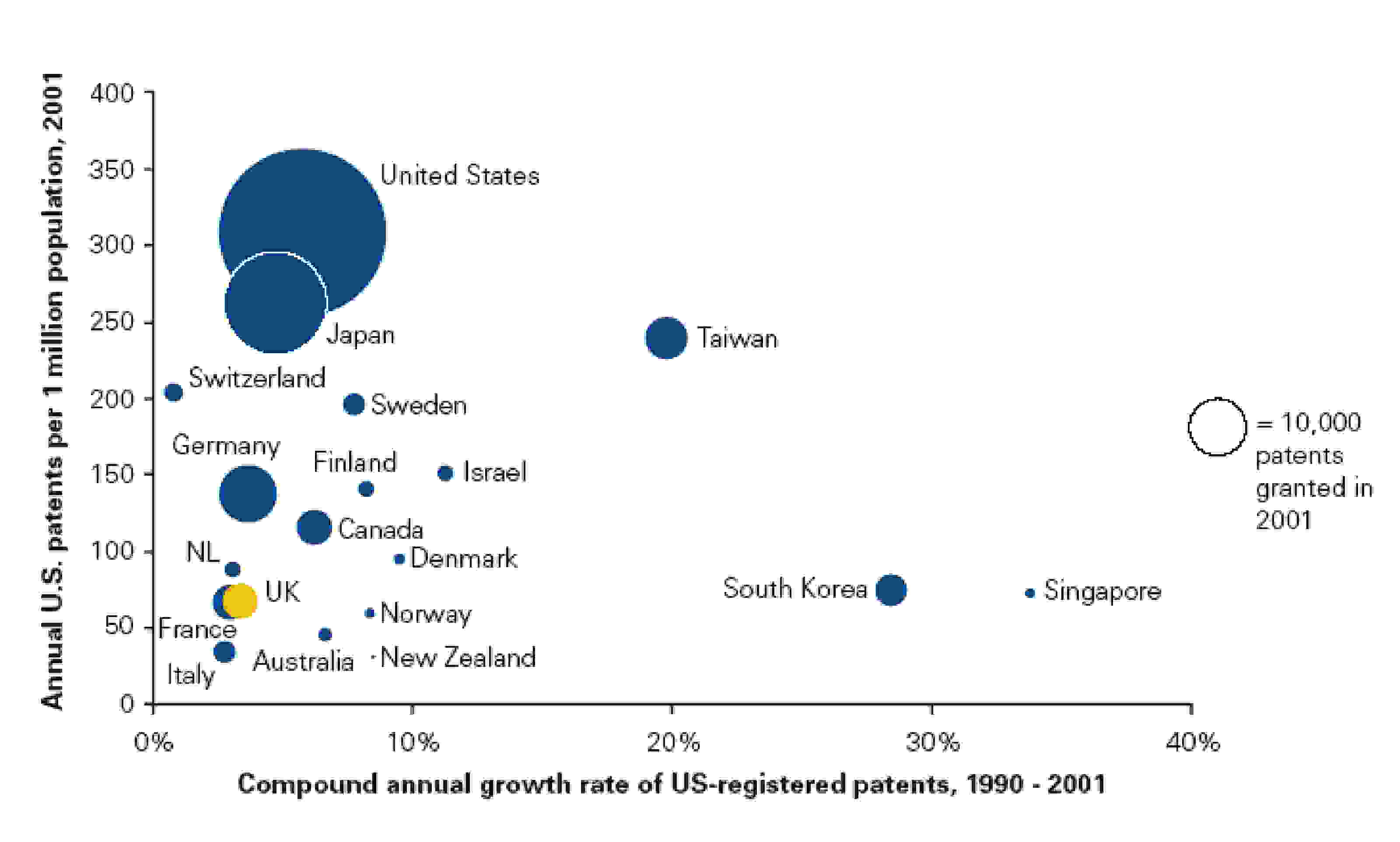| << Chapter < Page | Chapter >> Page > |
“Patents are a recently rediscovered corporate weapon.” For most of this century," says Rivette and Kline, "intellectual property played only a minimal role in shaping the commercial and strategic fortunes of American business. Patents were for the most part used defensively, if at all and few companies outside the pharmaceutical, biotechnology, or certain other sectors ever thought of them as strategic assets" (Rivette 2000).
The knowledge economy is all about the commercial exploitation of new ideas. It is essential that in any organisation or company have a carefully planned strategy for the management of it intellectual property. Indeed copyright is now one of the biggest US exports (International Intellectual Property Alliance 2002).
During the research it was found that there exists an uneven playing field regarding intellectual property management and protection that lends itself to the US patent system giving its citizens, universities and companies a significant advantage over its UK counterparts.
[link] shows national output of granted patents over a period of 11 years, clearly showing the US far ahead of the UK in the race for granted patents. Overall, the UK has a strong science base, but lags in patenting and commercialisation. Also, the UK’s strength in the life sciences masks lower performance in other areas of science and technology. Current levels of UK innovation are insufficient to drive UK productivity growth and close the UK productivity gap versus key competitors (DTI 2003).


Notification Switch
Would you like to follow the 'A study of how a region can lever participation in a global network to accelerate the development of a sustainable technology cluster' conversation and receive update notifications?